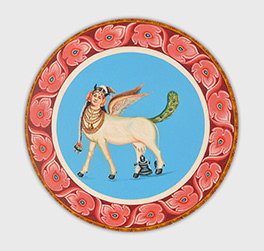Chennai
Documenting devotional spaces.

This project was in collaboration with D'Source - An E-resource portal for designers.
The photos from my work related travels had a lot of contextual design content from each region.
So I would contribute to the D'Source portal making my images available to other designers / artists.
In Chennai, temples are not only for solace but also for socialising and meeting people from the community. At the crack of dawn it is a common sight to see early risers like Lungi-clad men on two-wheelers and women draped in bold, colourful saris making
a kolam on their porch. This album documents a whole week spent walking through streets where I captured images of temples that the city is obsessively proud of. The presence of a temple is announced from miles away owing to shops selling flowers, garlands and religious paraphernalia. The imposing wood crafted kadavu ushers you into the temples. Whether it is the brightly painted atypical round gopuram of the Kapaleesvarar Temple or the unpainted gopurams of the Soumya Damodartemple or even the ceiling paintings within the Marandeesvarar Temple, whatever you see is abundant in colours and buzzing with activity. I have tried to capture patterns, rich colors, narrative carvings, ornamental roofs, painted ceilings and anything that caught my eye.
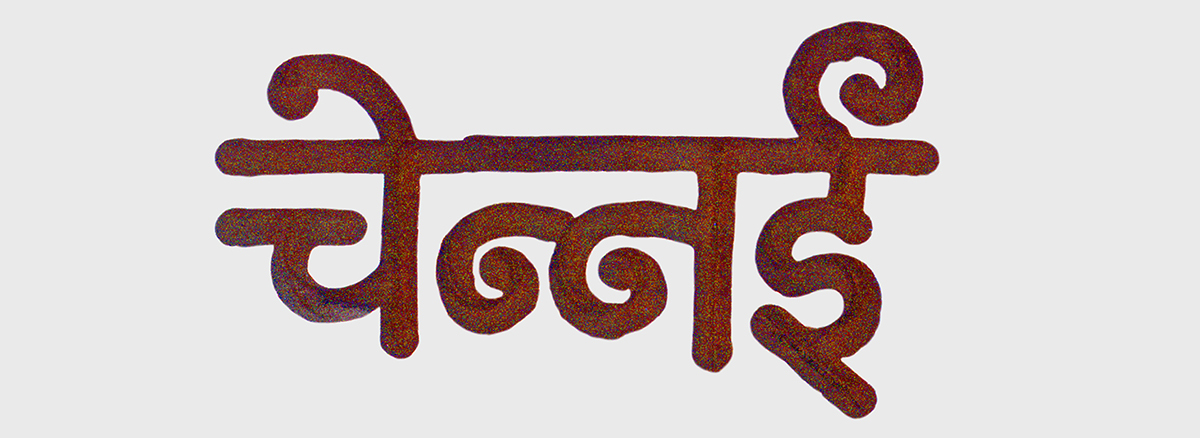
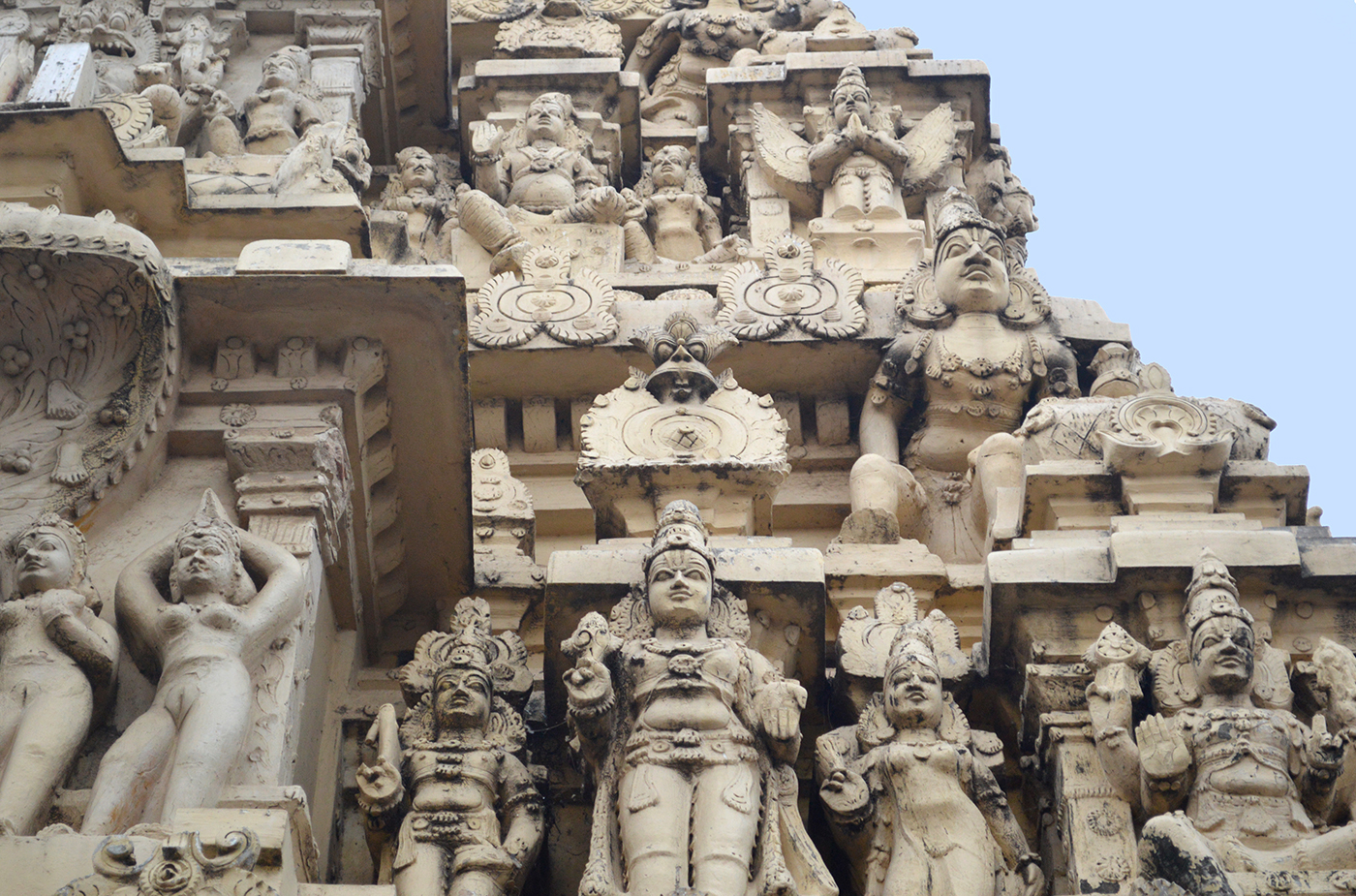
What is interesting about the 'gopuram' of the Sri Soumya Damordara Perumal Temple, is the fact that it remains unpainted. It imparts an unfinished, achromatic look to the temple structure. One can observe the anatomy, embellishments and patterns more closely in the absence of the painted colours.

There is a monochromatic beauty created by the depths and protrusions of carving on the temples spire.
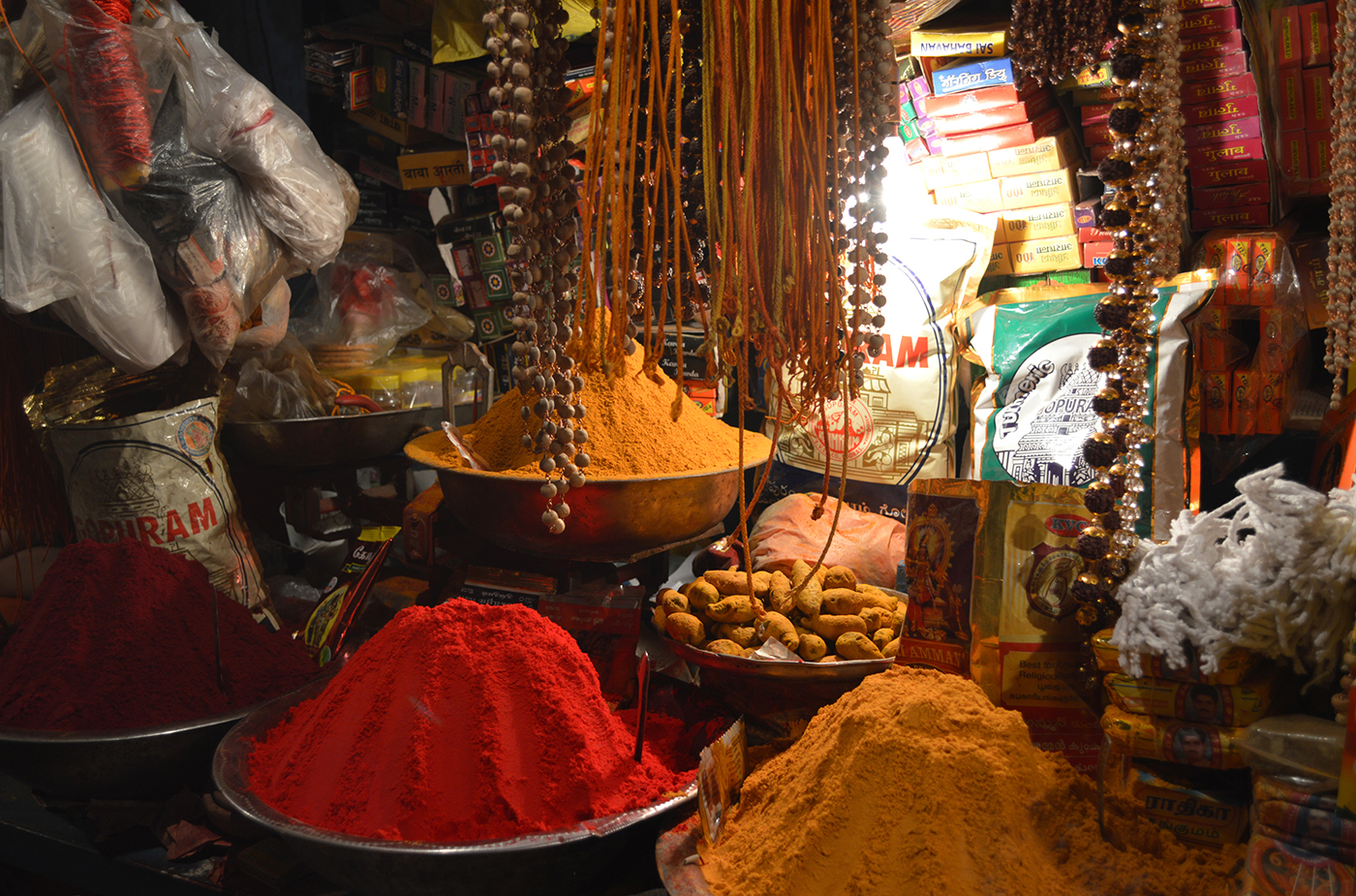
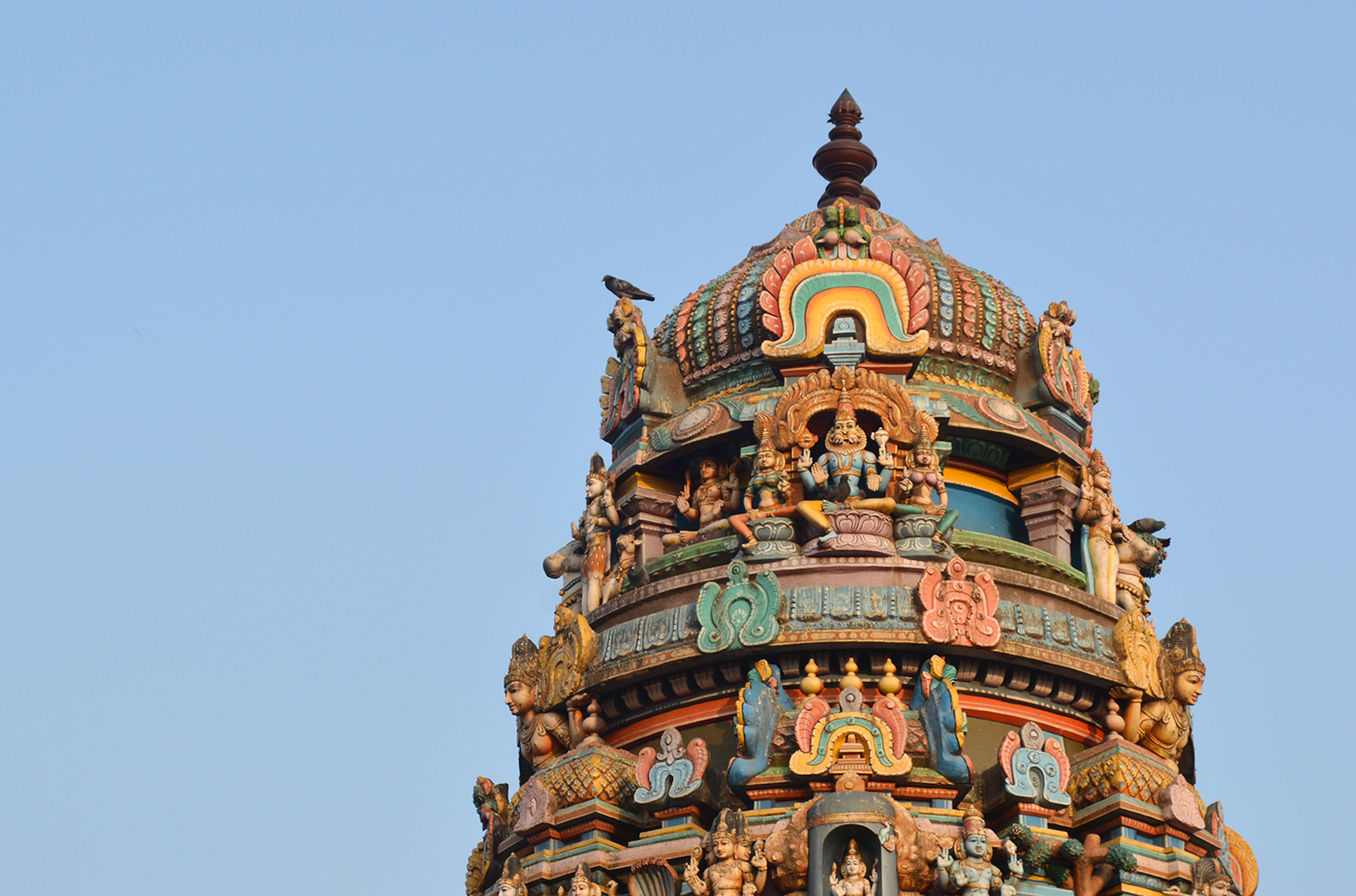
The Kapaleesvarar Temple is one of the only temples whose 'gopuram' is round in structure.
It goes on to influence the architecture within the temple space accordingly.
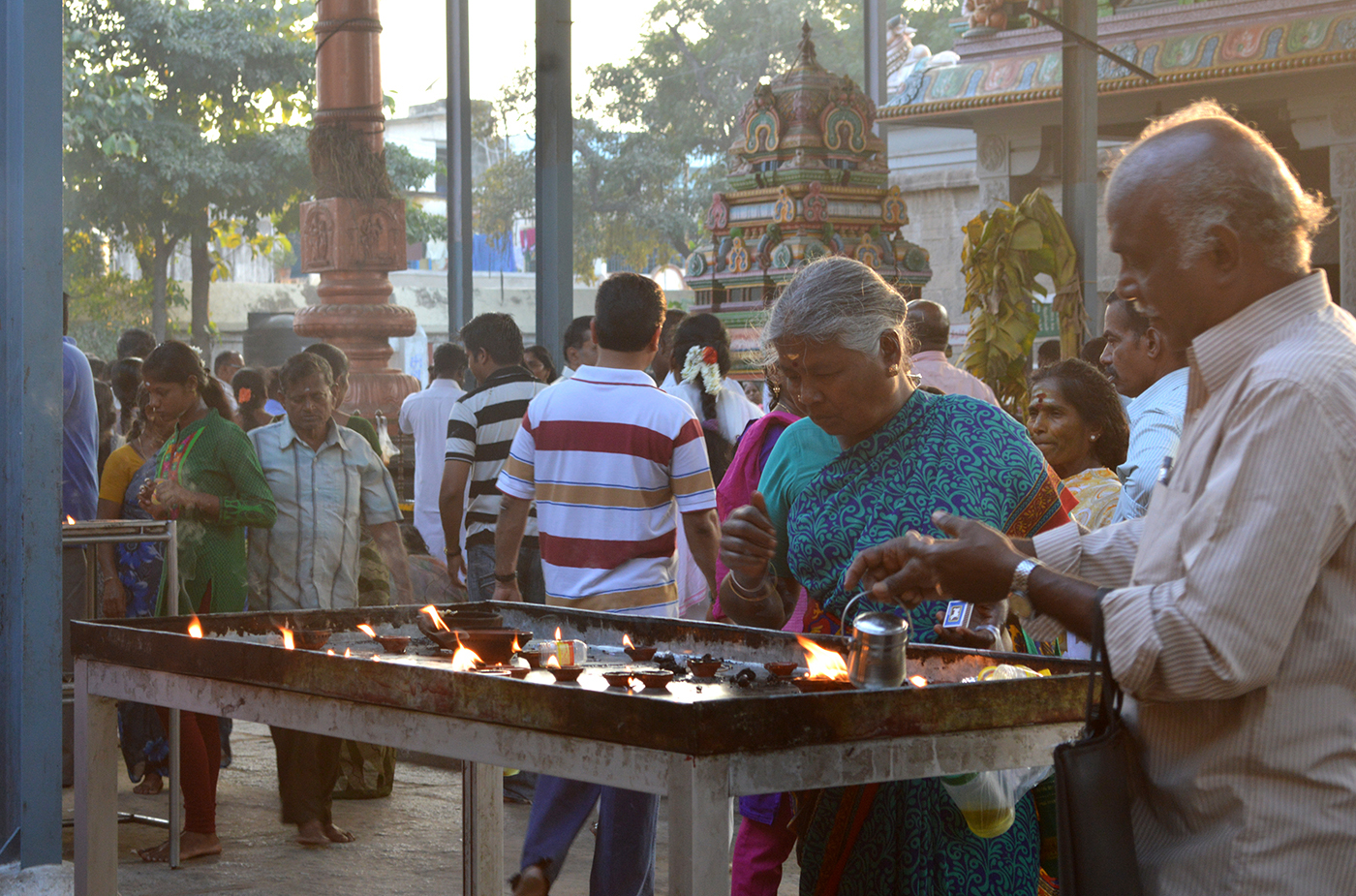
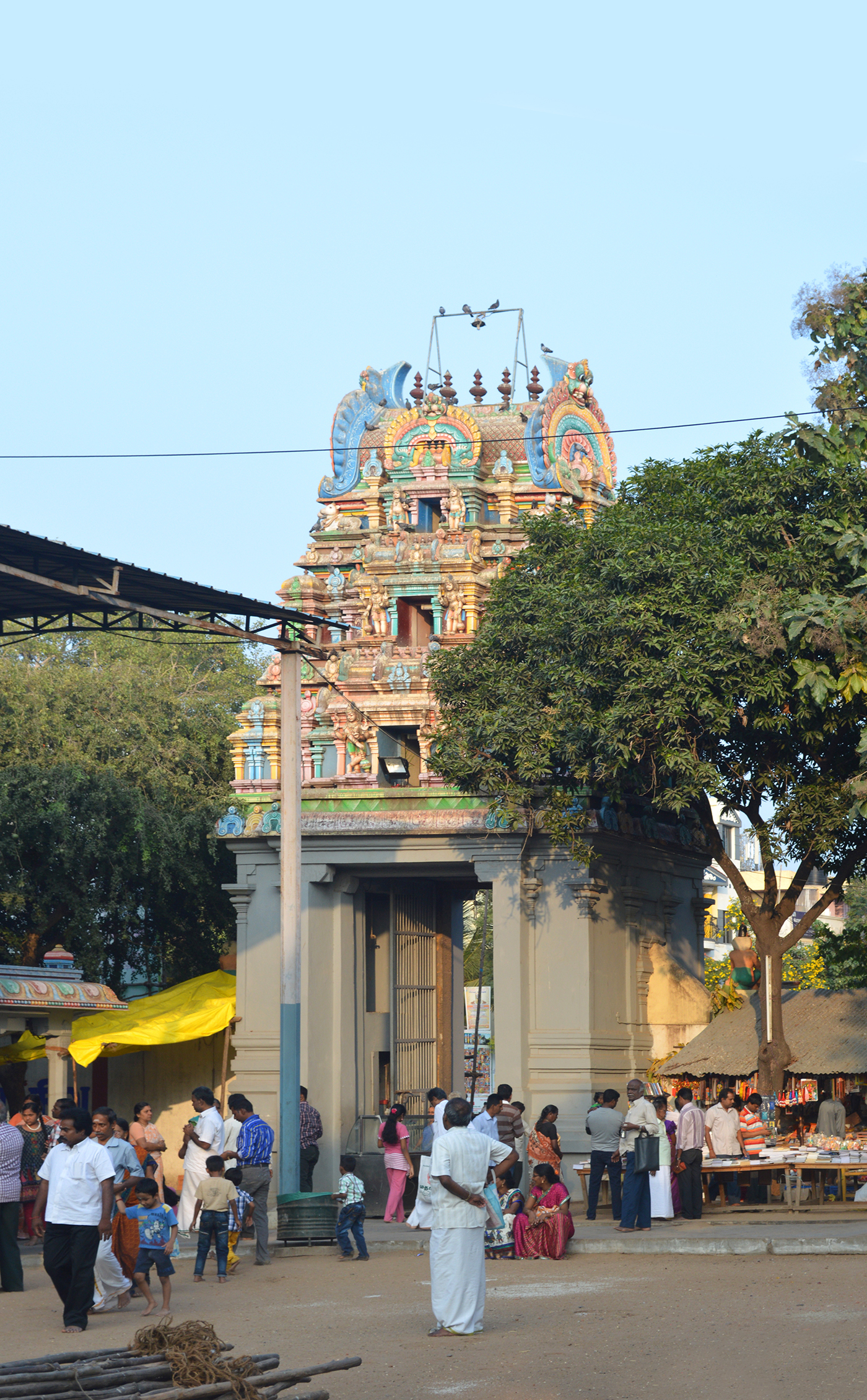
The temple courtyard is a social space where one can meet friends, relatives or take some time off.
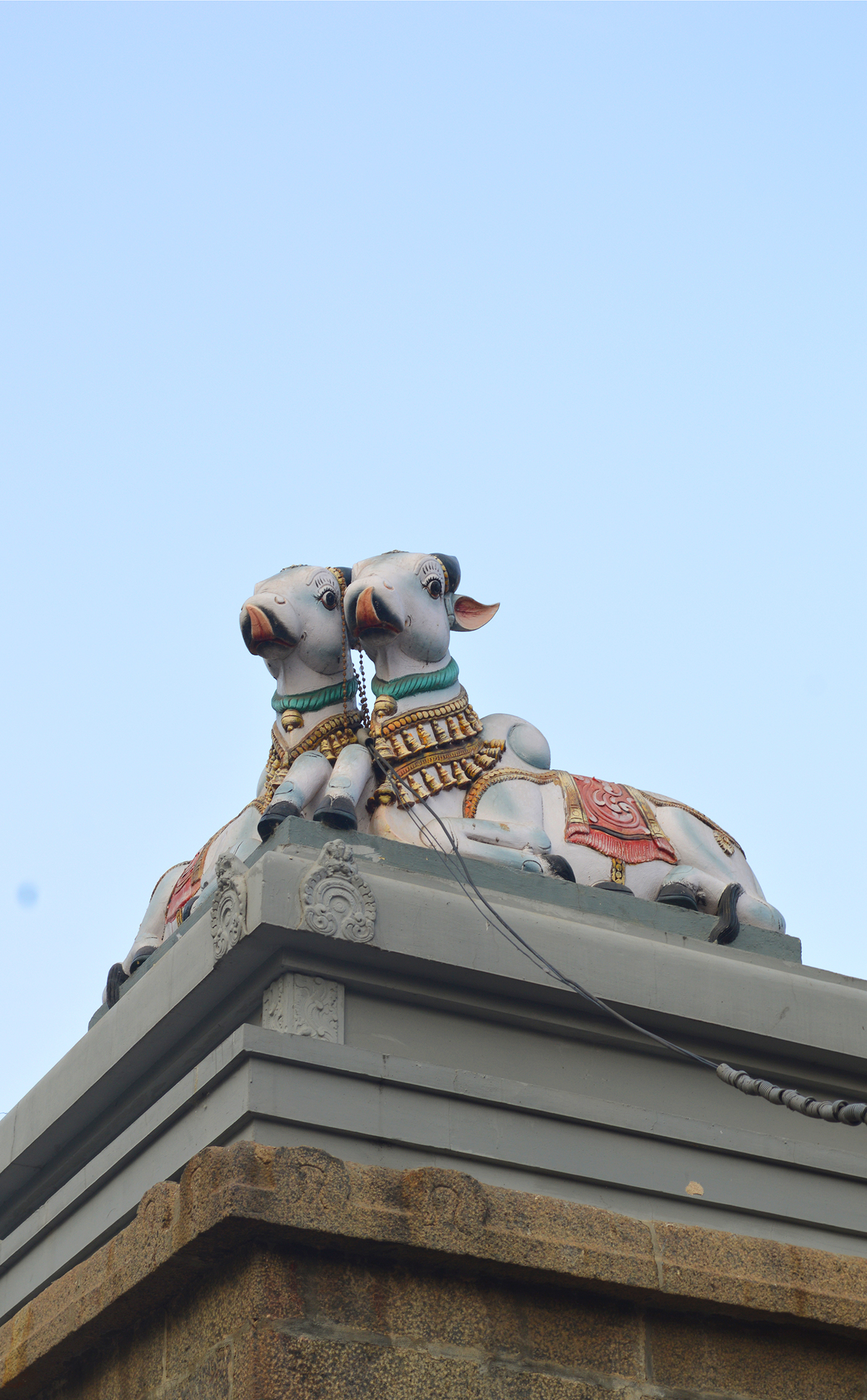
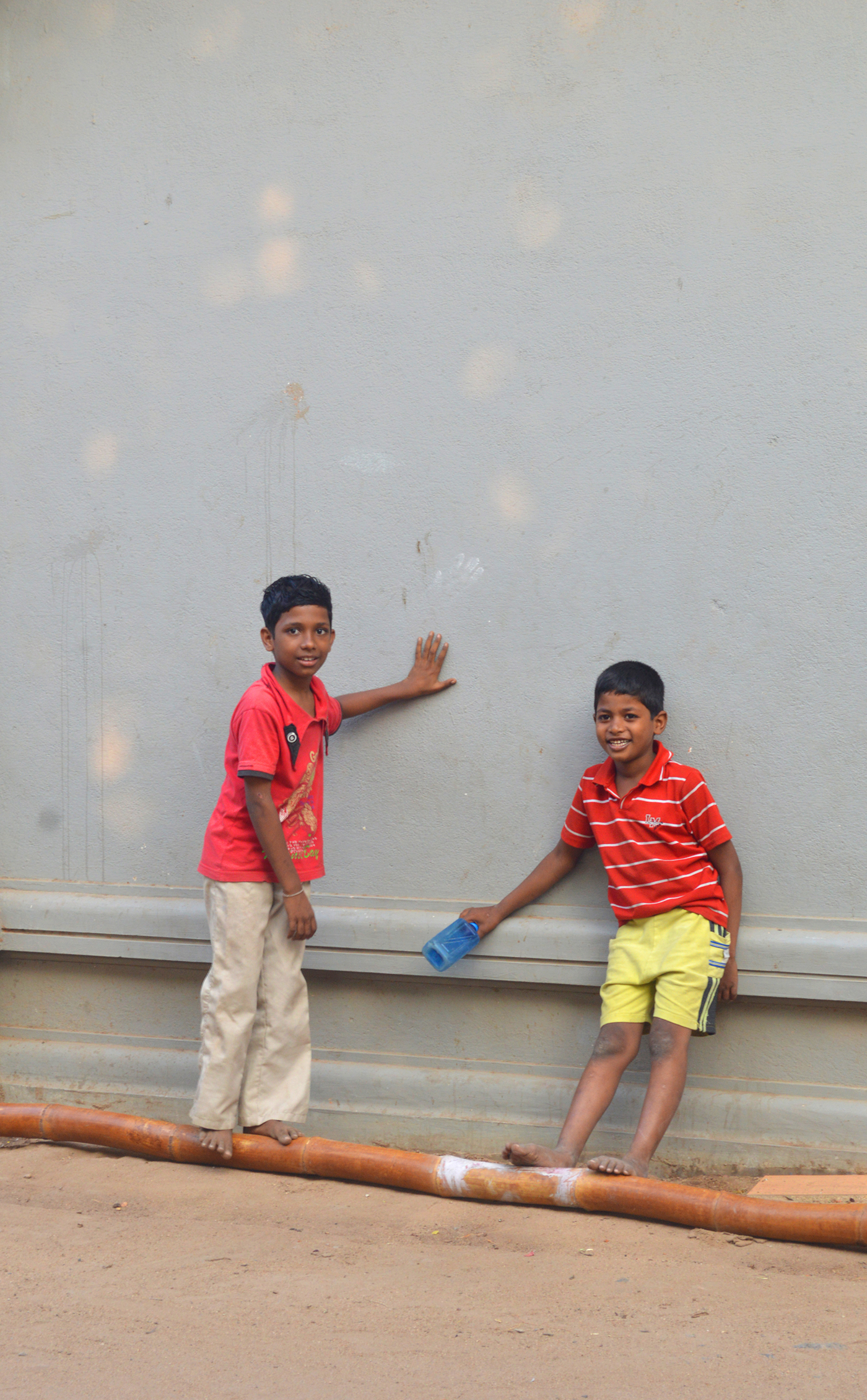
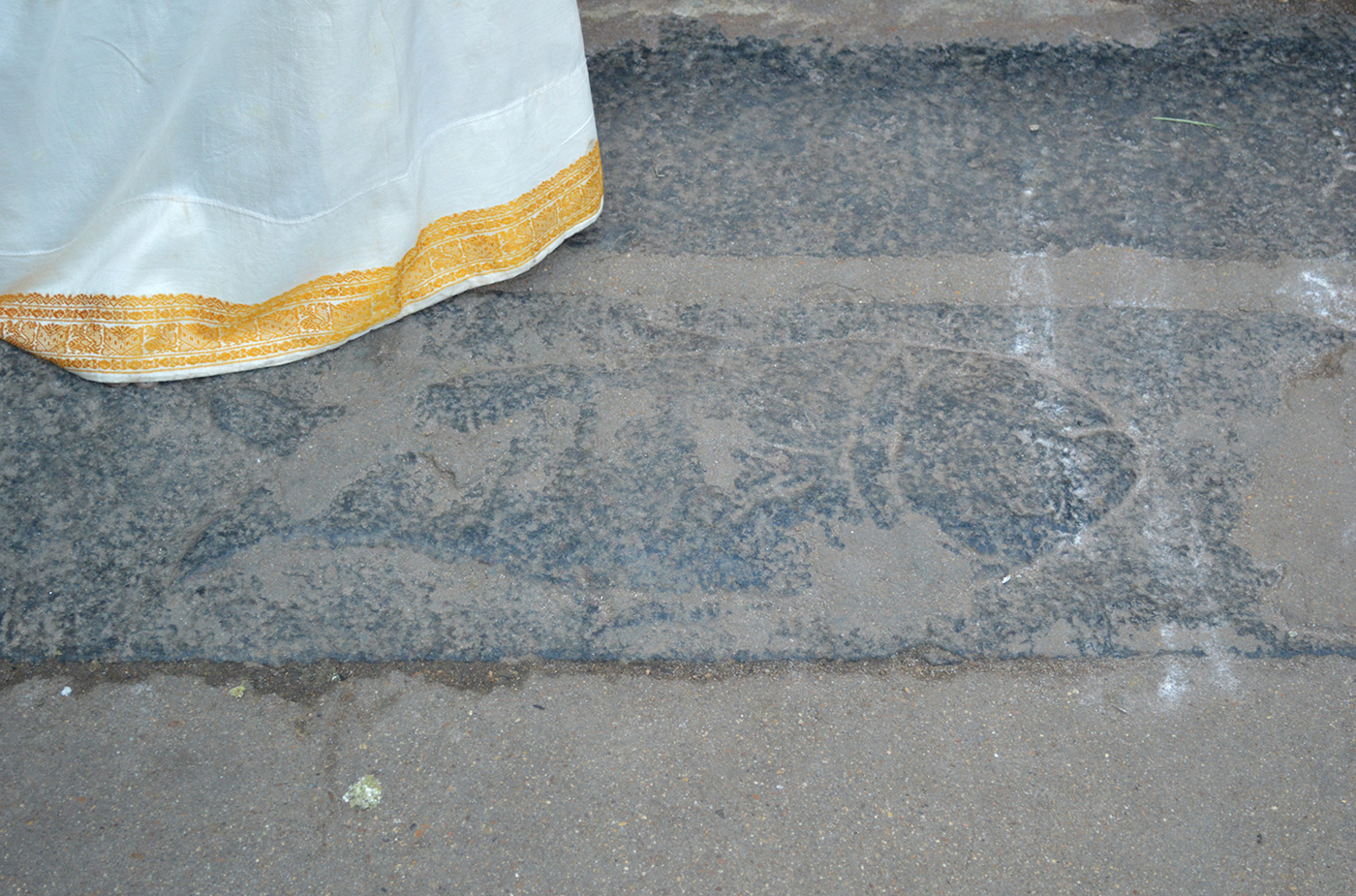
The fish that is roughly hewn on to the floor is a depiction of 'Matsya' the first avatar of Lord Vishnu.
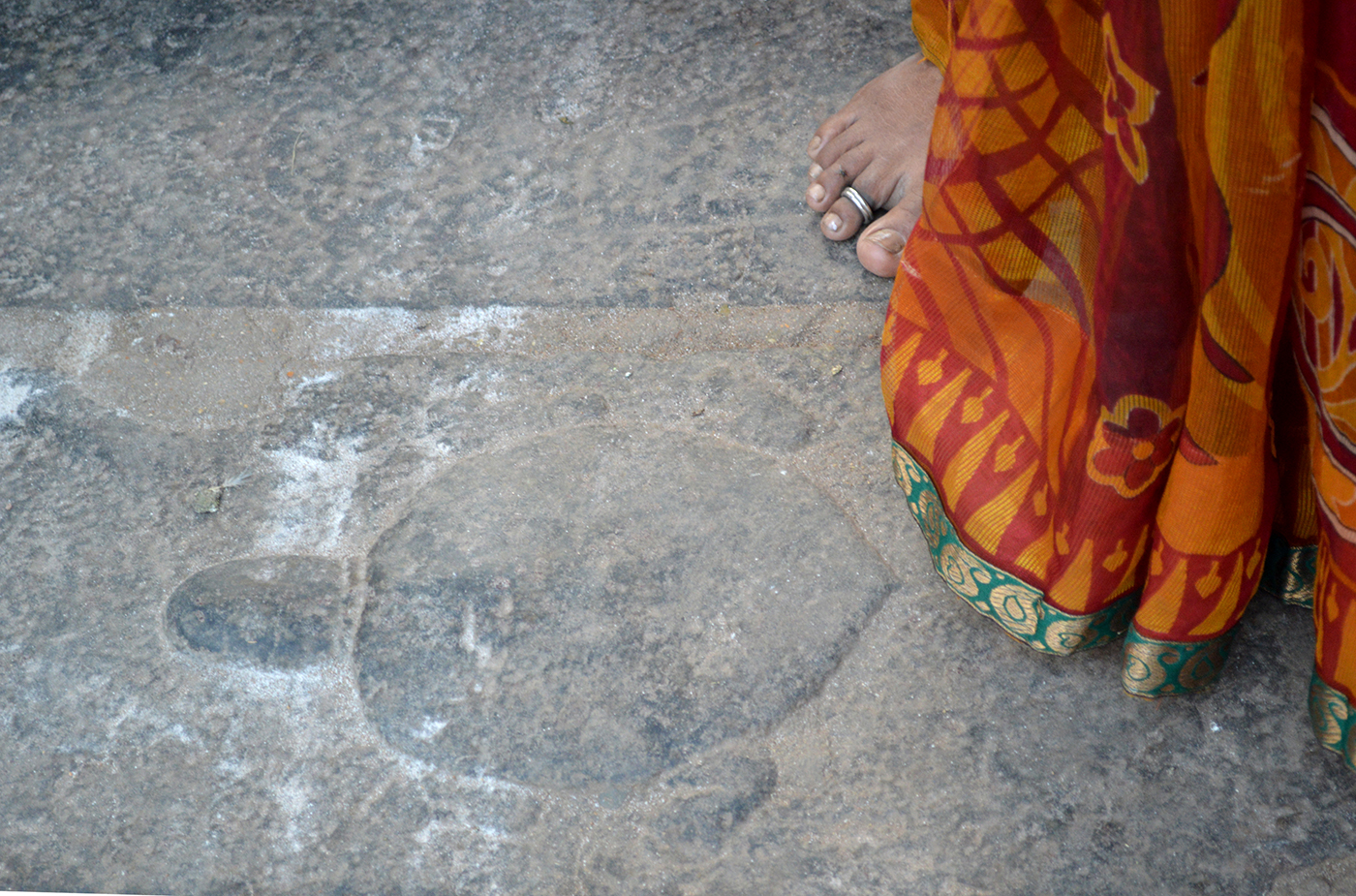
While the tortoise is the second avatar, called the 'Kurma' avatar.
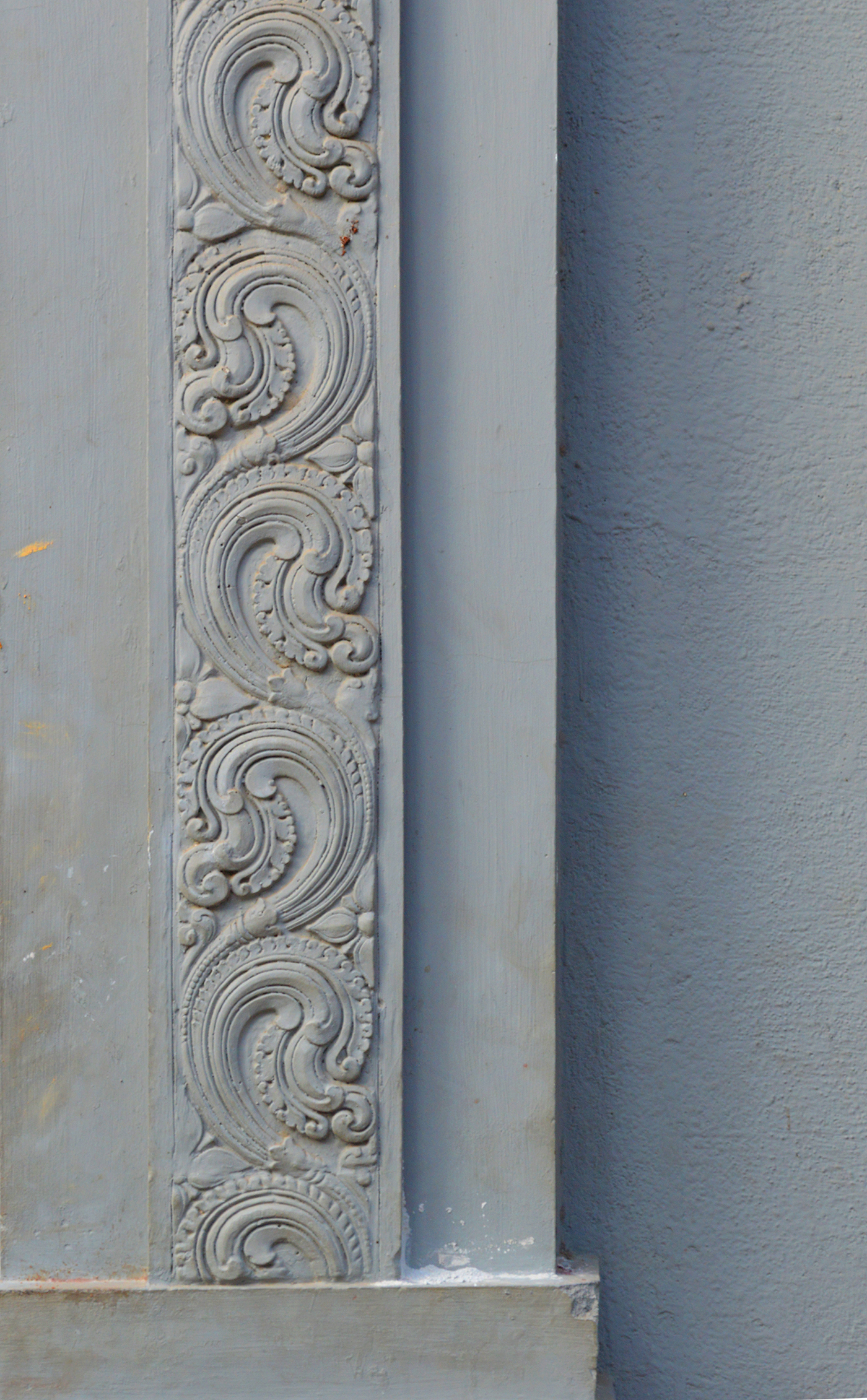

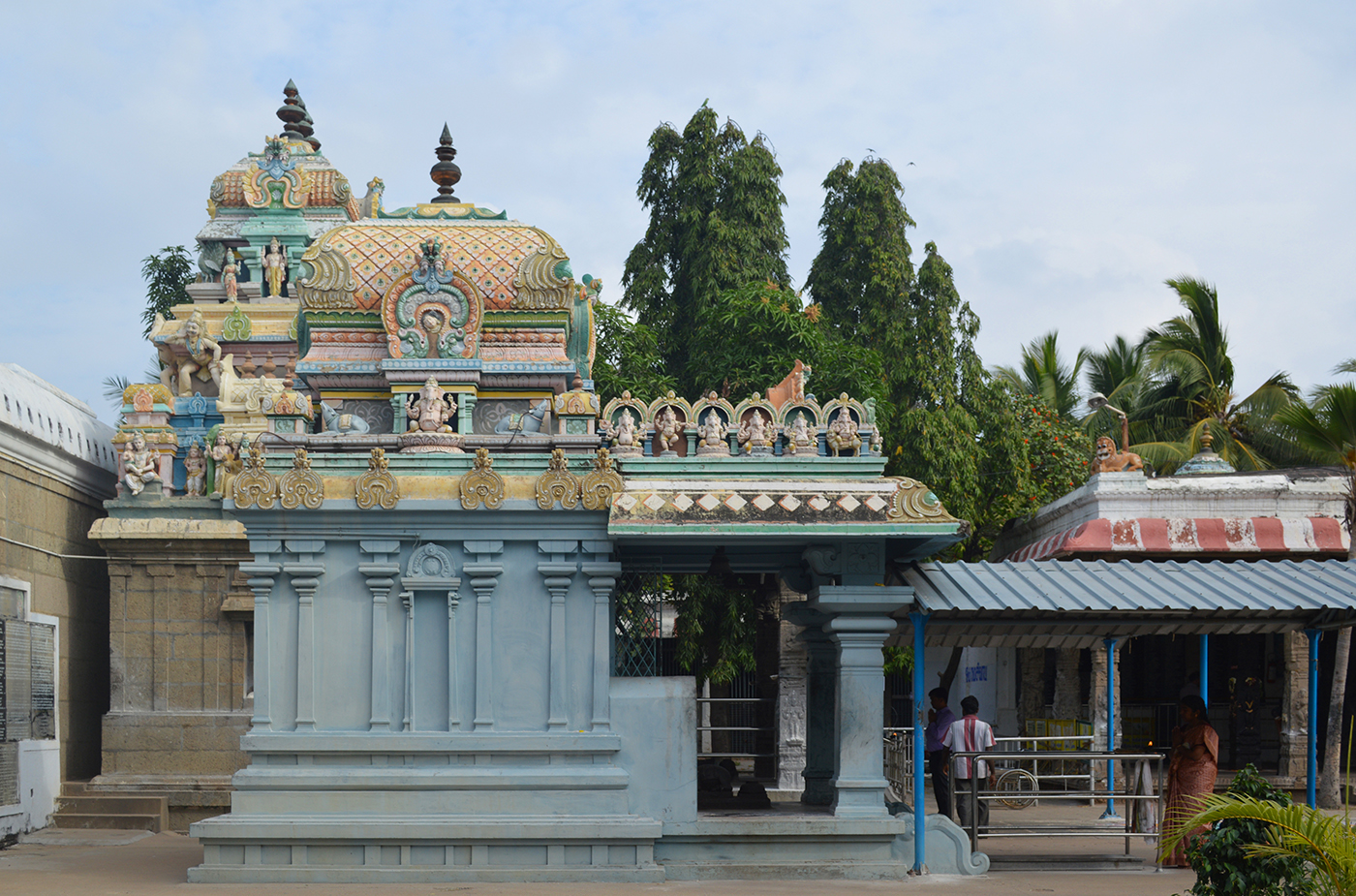
The Marundeeswarar Temple, Thiruvanmiyur.
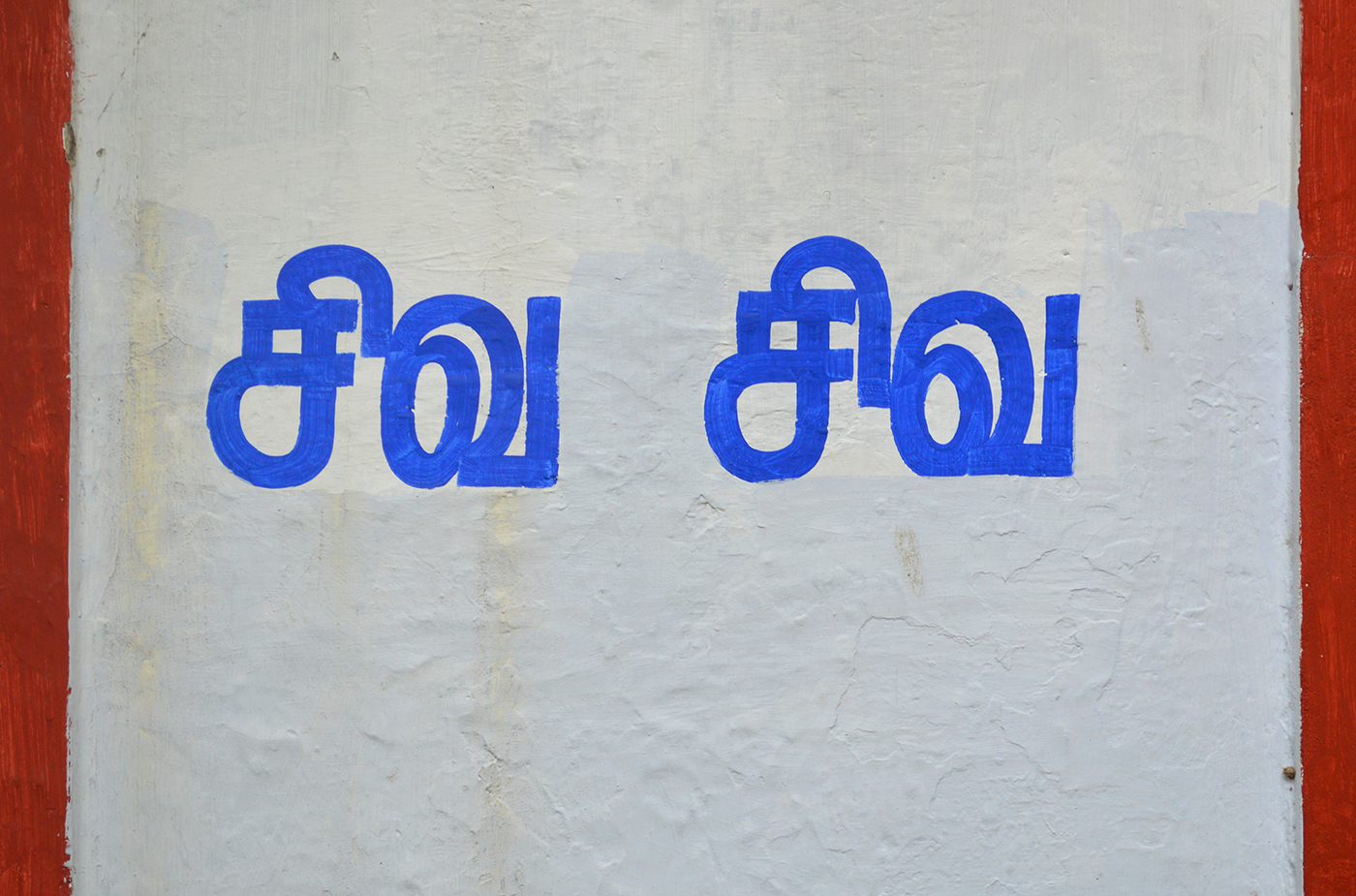
The words that are written on this wall within the temple courtyard are 'siva siva'.
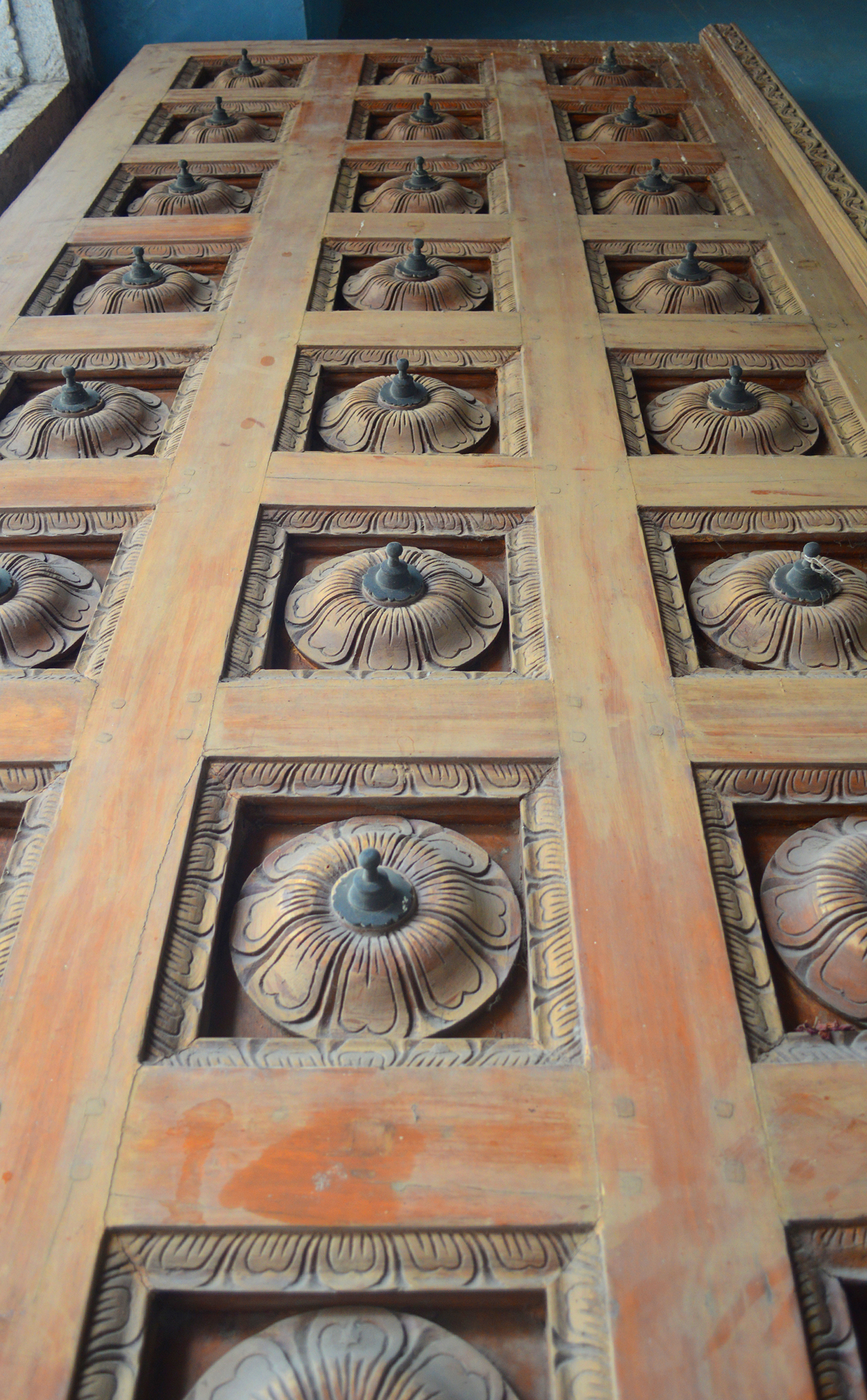
The ornamental doorway is called the "Kadavu' in Tamil.
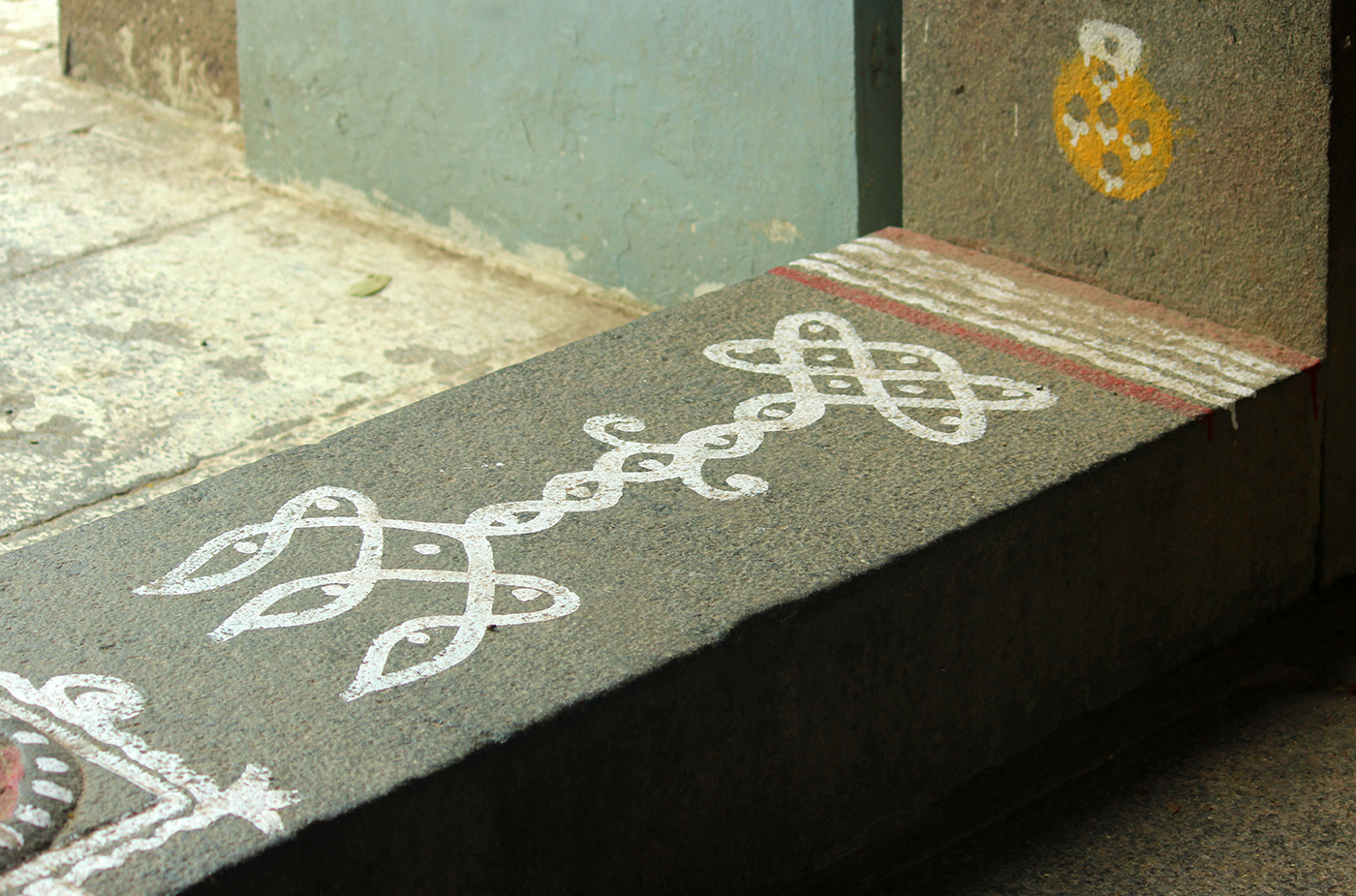
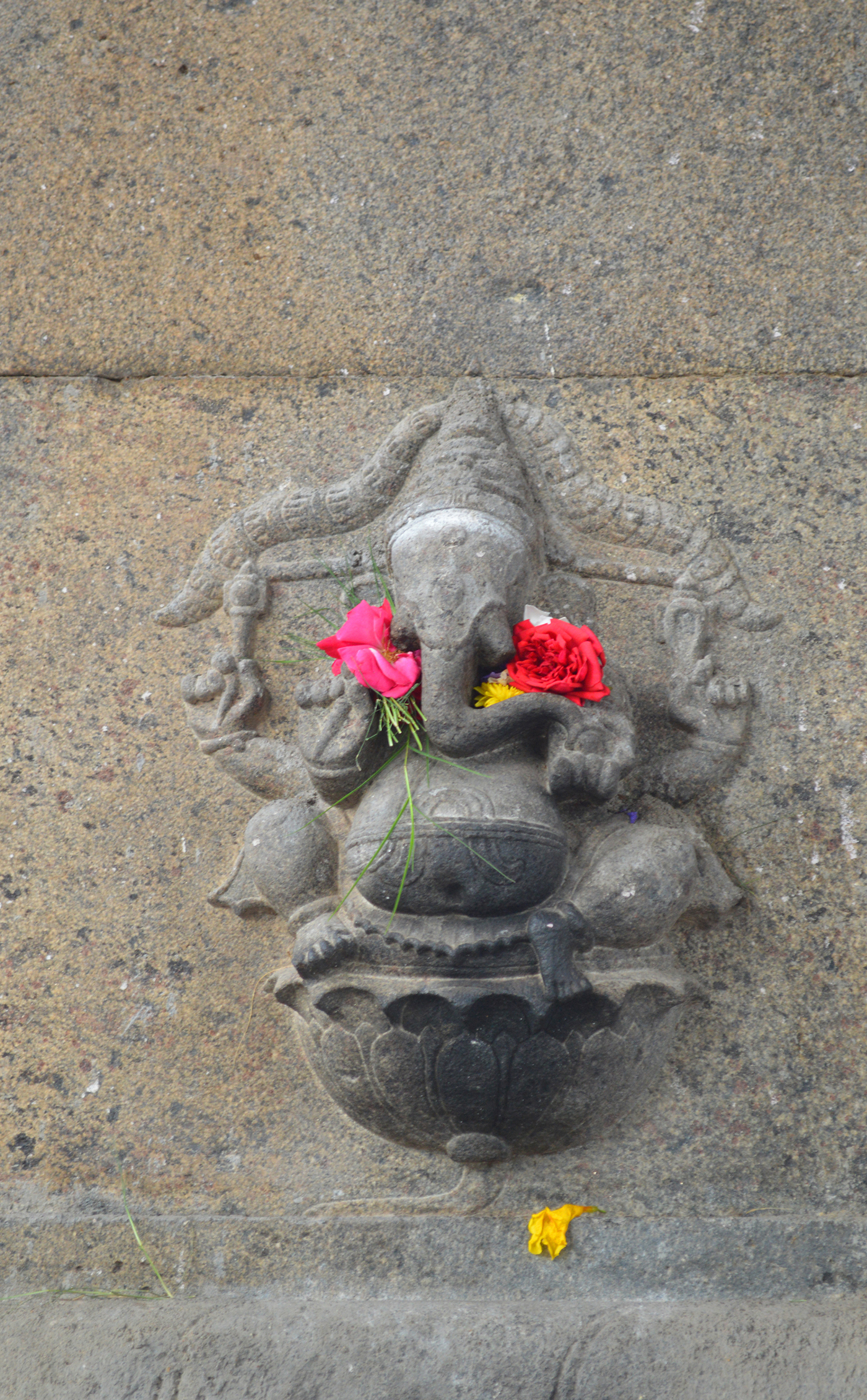
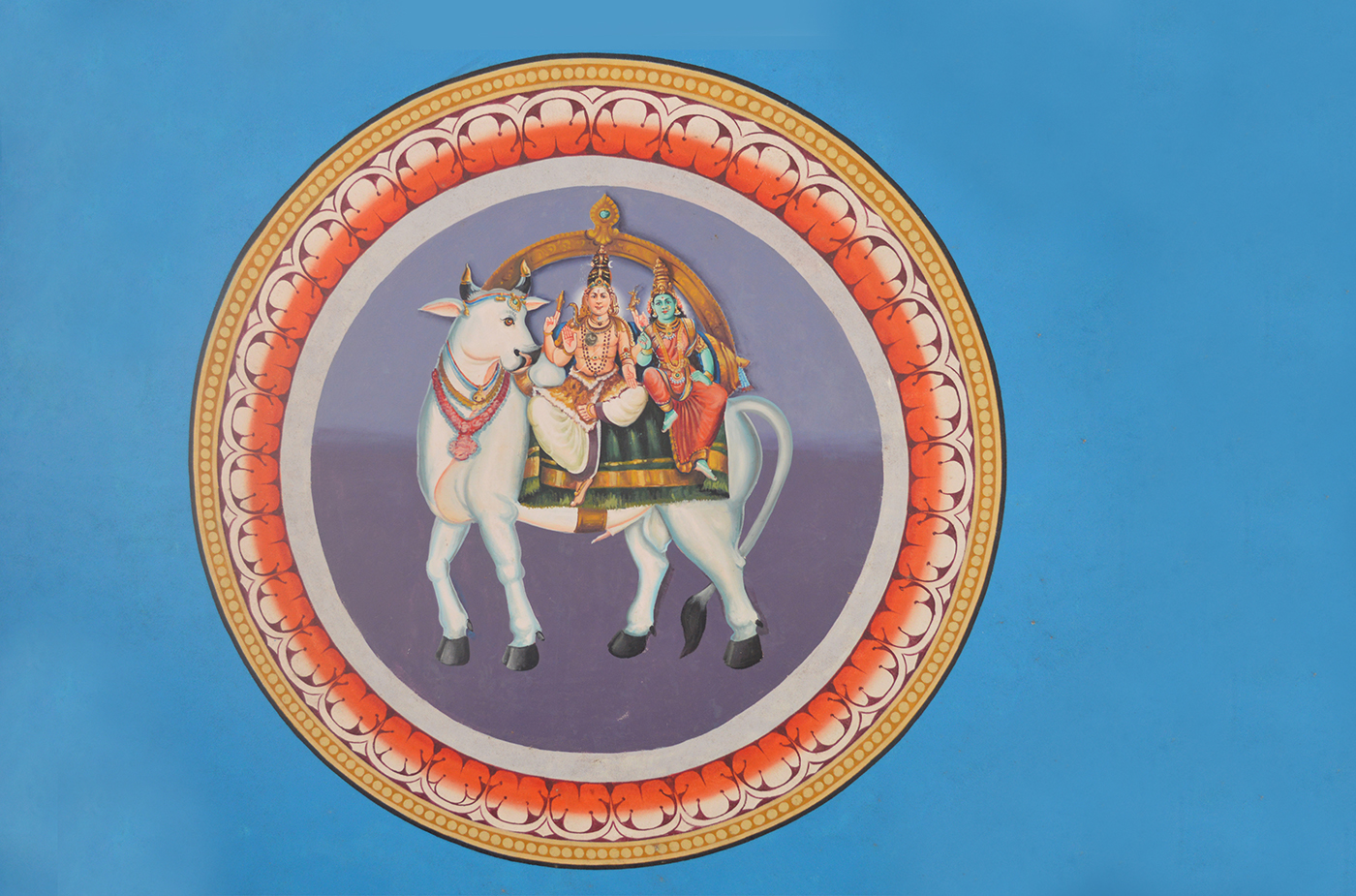
The painted motif on the ceiling of the temples entrance depicts Meenakshi Sundareswarar on a Rishabha vaahan.
It shows the Lord as Sundareswarar after he marries Parvathy in the form of Meenakshi, the Madurai king's daughter.
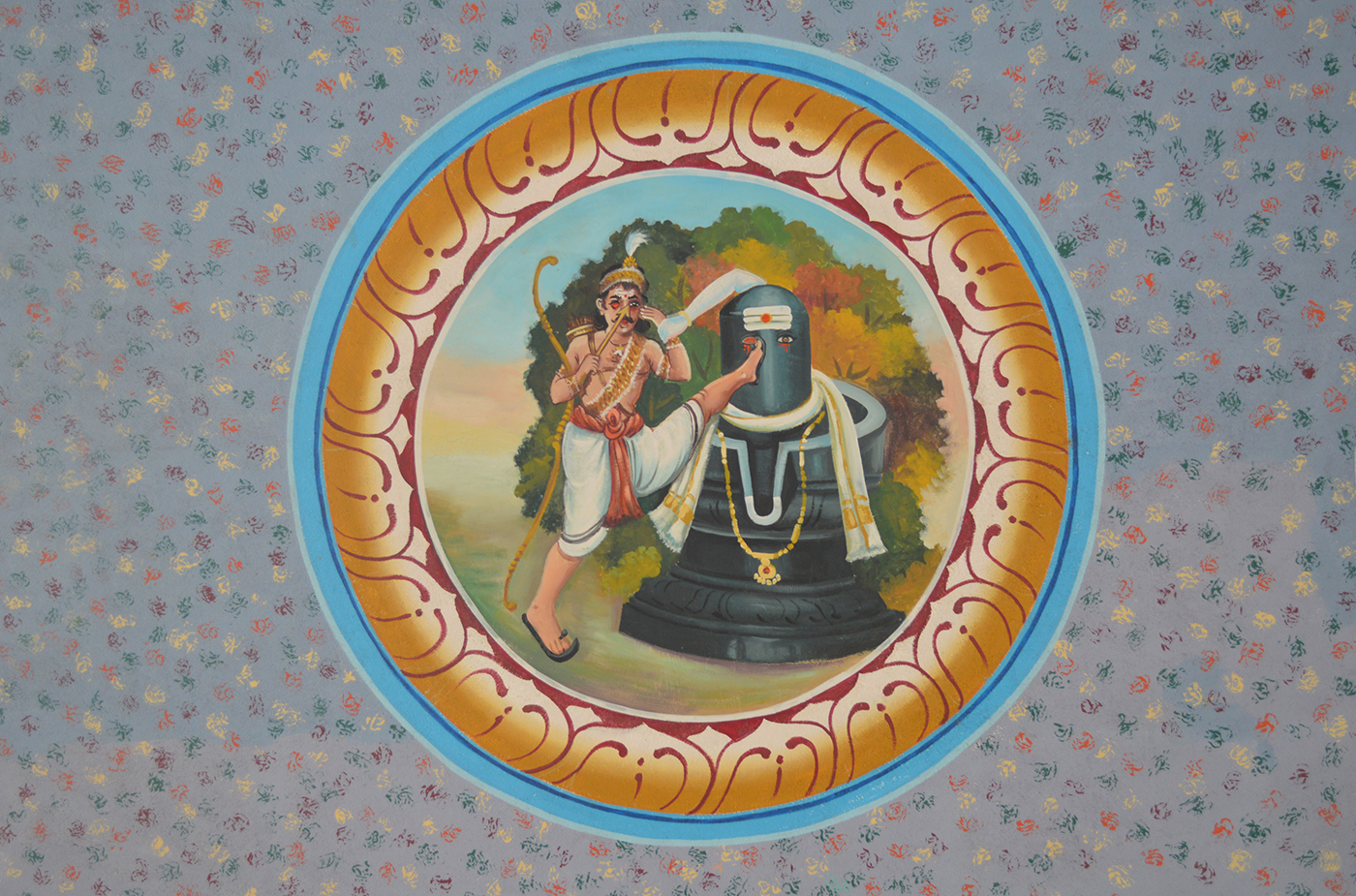
The panel depicts the 'Kannappa Nayanar Charithram', the story of the hunter prince, Kannappa, who stumbles upon a barely taken care of shiva linga in the jungle and grows attached to him, by offering a variety of foods that he eats, like meat etc. The brahmin who ventures into the forest every day to do pooja is horrified about the meat and complains to the Lord himself. Shiva decides to show Kannappa's staunch devotion to the Brahmin. One day, tears fall from his eyes when Kannappa comes in. Kannappa is worried that his Lord is sad, but he is unable to stop the tears from the Lord's eye, so he decides to donate his eye to the Lord. But, to make matters worse, the other eye also starts copiously tearing. Kannappa without hesitating marks the spot of Shiva's other eye with his leg propped on the Lord and digs out his other eye. The Brahmin is astounded and Kannappa becomes Kannappa Nayanar and gains 'nirvana' and forever takes a place among the 63 main devotees of Shiva, called 'Nayanmars'.

This picture is of the shrine of Lord Muruga, Shiva's youngest. The sculptures on the Gopuram are of 'Lord Muruga with both his consorts,
Valli and Deivanai' in the forefront and slightly in and up is the sculpture of Muruga as 'Lord Arumugam', meaning the six faced one.
Legend has it that Muruga was raised by these six women called the 'Karthigai Pengal' and hence he is an embodiment of all of them.

This panel depicts three different stories out of which the first one is Parvathy doing penance to reach Shiva's side again,
(As they have had a lot of quarrels, you see.) The second panel is Parvathy as Akilandeshwari. The third motif is Kamadhenu doing 'Abishekam' to a Shivalingam.

This is a sculpture of Shiva and Parvathy in the middle, Ganesh on their right and Muruga on their left. The celestial family is completely represented here.

The shrine near the Pond - also called Thiru Kulam or the Sacred Pond - is that of Lord Dakshinamurthy, another form of Shiva as the Teacher.
